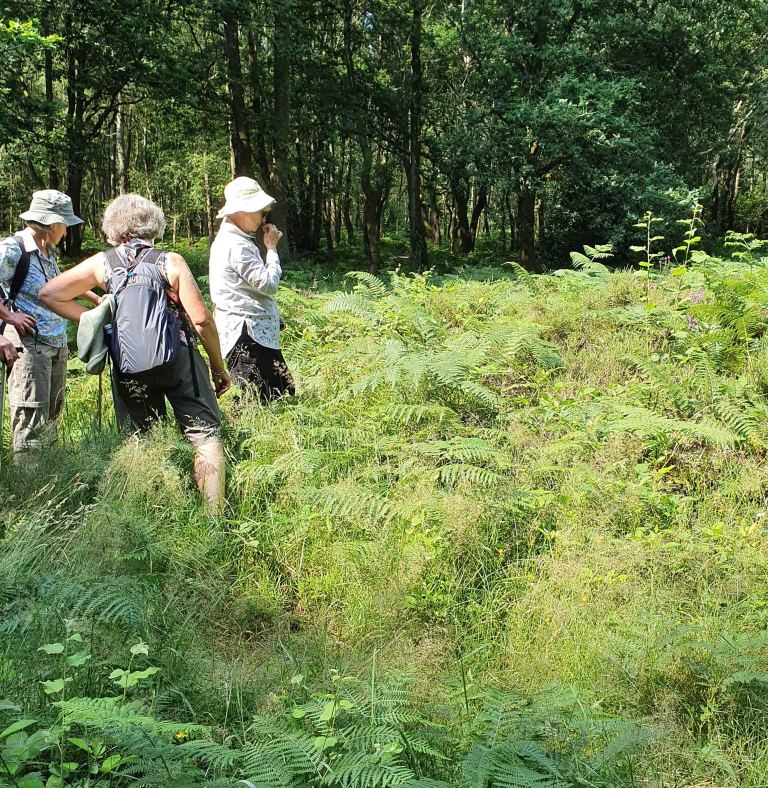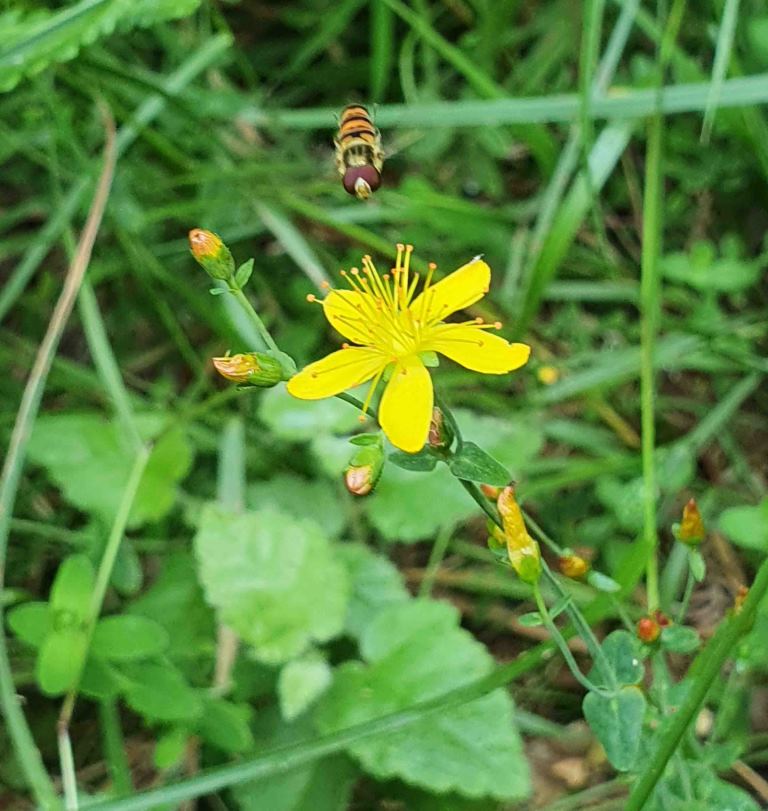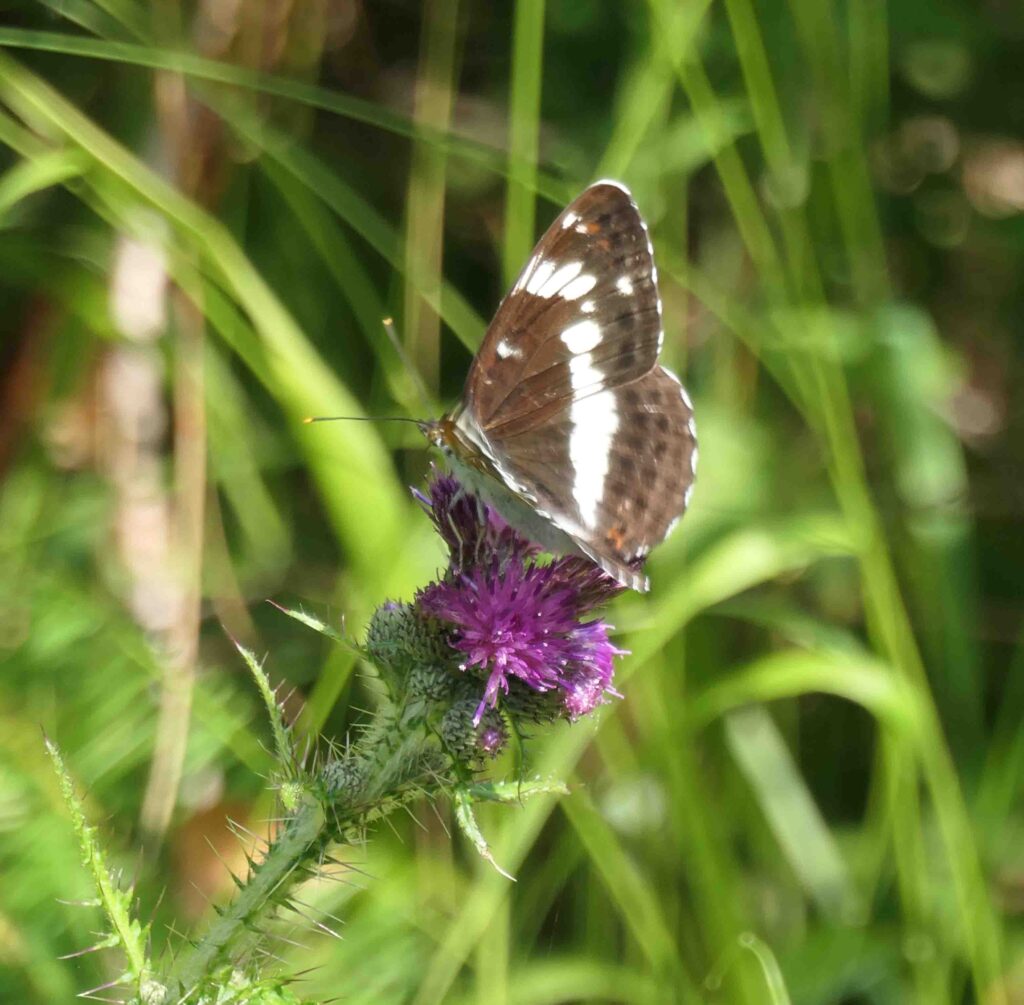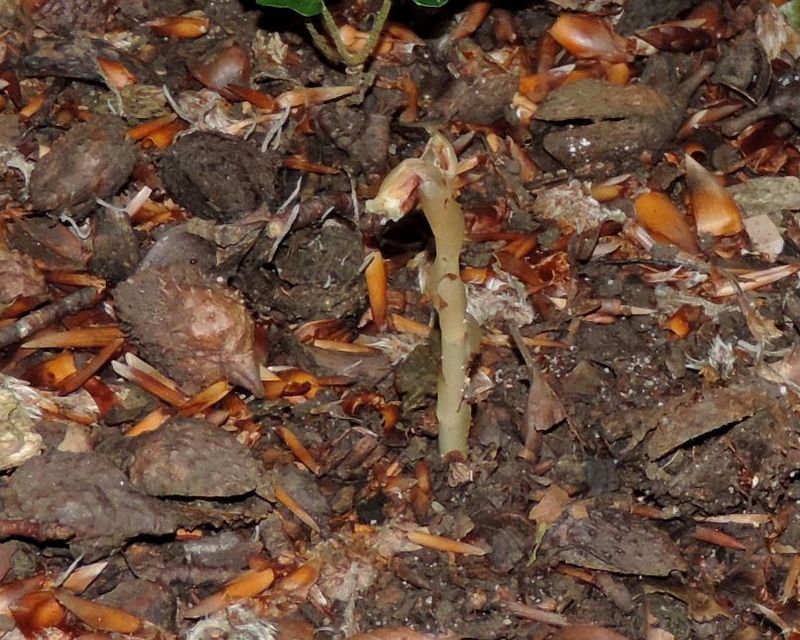Sally Rankin led a walk at Kingwood Common on the morning of Wednesday 21 July. The temperature was in the high 20s, but fortunately there was welcome shade for much of the walk. Sally helped to write the management plan for the site back in 1995, and this was used to secure Countryside Stewardship funding. Subsequent funding has come from the Trust for Oxfordshire’s Environment. The Common nowadays is dominated by oak and birch woodland, but historic photographs show it as much more open. The walk started out along a concrete path, a legacy from its wartime use, first as a prisoner of war camp, then as a camp for Polish refugees. The path led to an open glade, with Ling, which was not yet in flower, and Bell Heather, which was already flowering. Acid soils with heather are rare in Oxfordshire. Slender St John’s-wort was also seen here. Continuing along woodland paths, the route led along the back of the garden at Great David’s, where several large Small-leaved Lime trees were growing along the boundary. A brief diversion led to the roadside at Barn’s Farm, where there was a big patch of Broad-leaved Helleborines. Many plants had had their flowers browsed off by deer, but there were still a few flowering specimens. The route then led into the woodland of Burnt Platt, where a White Admiral butterfly was seen. The path led out onto a wide Forestry Commission ride. Plants at the side of the track included Greater Bird’s-foot-trefoil, Vervein, Common Spotted-orchid and Perforate St John’s-wort. A large cleared area beside the track, bordered by a dead hedge, is being managed as a refuge for amphibians and reptiles. The Green Gym have recently been pulling Bracken and removing brambles from around the heather plants, and the plan is to use a brush-cutter to clear the remaining Bracken. Turning round and heading back down the ride, the group were rewarded with excellent views of what were probably two different White Admirals, perching obligingly on the vegetation next to the track. A wider clearing next to the track had Corn Mint, Musk Mallow, Centaury, Eyebright and Hairy St John’s-wort. The track led to a path junction where the only Wild Service-tree on the Nettlebed Commons is to be found. It had several suckering specimens around its base. Yellow Pimpernel was seen beside the next path, which led through Grayhone Plantation. The route then led southwards alongside the massive deer fence which protects Oveys Wood. Continuing into Greatbottom Wood, there were some interesting plant finds, including Yellow Bird’s-nest, Green-flowered Helleborine and several specimens of Bird’s-nest Orchid which were well past their best. A Common Toad was spotted at the bottom corner of the wood. The route back to the start led through Littlebottom Wood, up the lane to Peppard Hill and back across the south-east corner of Kingwood Common, passing another glade with heather on the way. Some of the group then continued to the Cherry Tree pub at Stoke Row for lunch.
Pictures by Tom Walker, Rob Stallard and Jan Haseler






